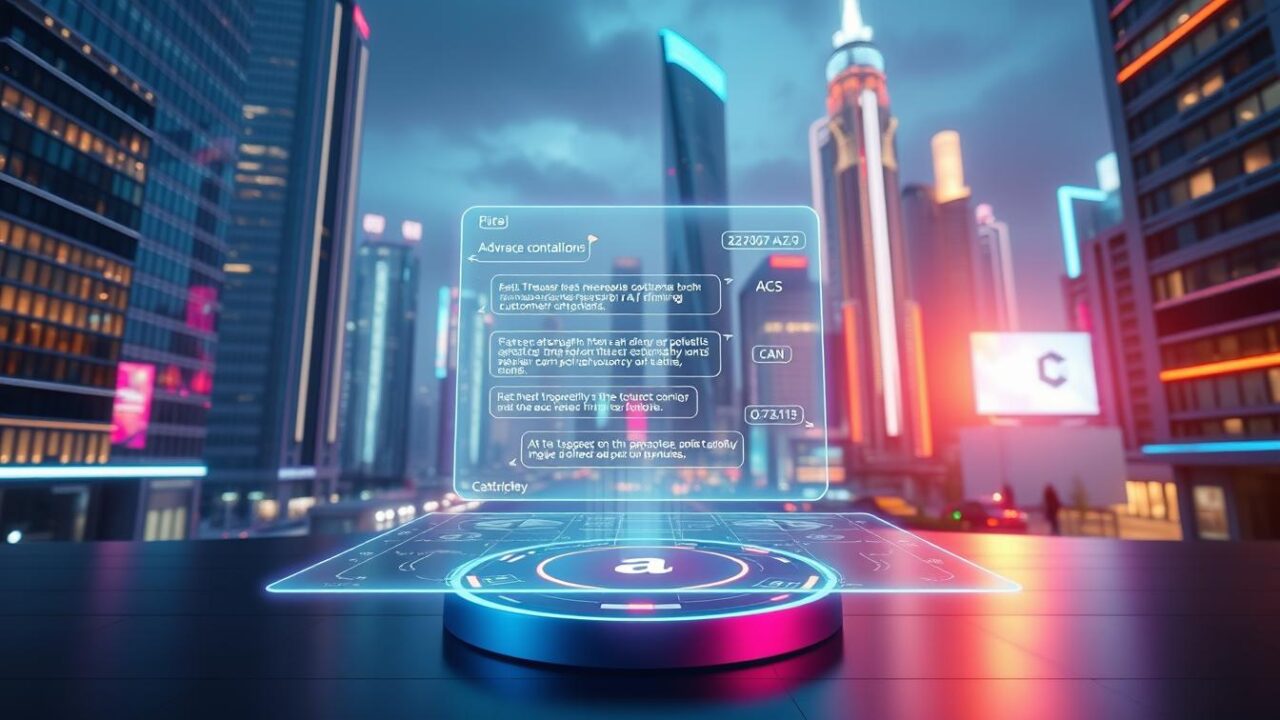Did you know that 53% of global shoppers prefer SMS and MMS as their favourite way to communicate with businesses? Yet, traditional text messaging is evolving into something far more dynamic. Enter RCS Messaging, a game-changer in mobile communication that transforms basic texts into rich, interactive experiences.
Unlike traditional SMS, RCS (Rich Communication Services) allows businesses to send vibrant, branded messages with features like high-resolution images, videos, and interactive buttons. This leap from simple text to multimedia-rich communication enhances customer engagement and builds stronger relationships. It’s not just about sending a message; it’s about creating an immersive experience.
With RCS, businesses can share real-time updates, showcase products, and even enable one-click purchases directly within the message thread. Verified sender IDs add a layer of trust, ensuring customers feel secure while interacting with brands. This innovation is reshaping how companies connect with their audiences, making communication more efficient and impactful.
Key Takeaways
- RCS Messaging transforms basic texts into rich, interactive experiences.
- It supports high-resolution images, videos, and interactive buttons.
- Verified sender IDs enhance trust and security for customers.
- Businesses can enable one-click purchases and real-time updates.
- It significantly improves customer engagement and brand loyalty.
Introduction to Rich Communication Services

The journey of mobile messaging has seen remarkable transformations over the decades. From the humble beginnings of SMS in the early 1990s to the multimedia-rich capabilities of MMS, and now to the advanced features of Rich Communication Services (RCS), the evolution has been nothing short of revolutionary.
The Evolution from SMS and MMS
SMS, or Short Message Service, was introduced in 1984 and became mainstream by the early 1990s. Limited to 160 characters, it was a simple yet effective way to send text-based messages. However, its limitations were clear—no support for images, videos, or interactive elements.
MMS, or Multimedia Messaging Service, arrived in 2002, allowing users to send images, audio clips, and short videos. While this was a significant improvement, MMS still had its drawbacks, including file size restrictions and inconsistent delivery across networks.
Why Rich Communication Matters in Today’s Digital Age
Enter RCS, the next leap in messaging technology. Unlike SMS and MMS, RCS supports high-resolution images, videos, and interactive buttons. It also offers features like read receipts, typing indicators, and real-time updates, making it a more dynamic and engaging solution for businesses and customers alike.
Here’s why RCS is a game-changer:
- Enhanced Security: Verified sender IDs ensure trust and authenticity.
- Branding Opportunities: Businesses can create visually appealing, branded messages.
- Interactive Elements: One-click purchases and real-time updates improve customer engagement.
In today’s data-driven world, where customers expect personalised and interactive experiences, RCS bridges the gap between traditional messaging and modern communication needs. It’s not just about sending a message—it’s about creating a meaningful connection.
RCS Messaging: The Next Big Thing in AI-Driven Customer Communication

The fusion of AI and messaging technology is unlocking new possibilities for customer engagement. By integrating intelligent systems, businesses can deliver hyper-personalised experiences that resonate deeply with their audience. This synergy is transforming how brands interact with customers, making every message more meaningful and impactful.
Enhanced Customer Engagement and Trust
One of the standout features of this technology is its ability to build trust. Verified sender identities ensure that every interaction feels secure and authentic. This is crucial in today’s digital landscape, where trust is a cornerstone of customer relationships.
Interactive elements like chatbots and real-time analytics further enhance engagement. For instance, chatbots can handle routine queries, freeing up human agents for more complex tasks. This not only improves efficiency but also creates a seamless user experience.
Driving Business Success with Interactive Messaging
Interactive messaging is more than just a communication tool; it’s a driver of business success. Features like one-click purchases and suggested replies streamline the customer journey, reducing friction and boosting conversion rates.
Successful campaigns have shown that personalised messaging can significantly increase customer loyalty. For example, businesses using AI-driven insights to tailor their messages have seen engagement rates soar by up to 74%. This demonstrates the power of combining technology with thoughtful communication strategies.
In conclusion, the integration of AI with messaging platforms is not just a trend—it’s the future of customer communication. By leveraging these advanced features, businesses can create meaningful connections, drive engagement, and achieve measurable success.
Features and Capabilities of RCS for Business

Modern businesses are leveraging advanced messaging tools to stay ahead in customer communication. These tools not only enhance interactions but also provide a competitive edge in today’s digital landscape. One such innovation is Rich Communication Services (RCS), which offers a suite of features designed to elevate business messaging to new heights.
Rich Media, Custom Branding, and Interactivity
RCS enables businesses to send high-quality images, videos, and interactive content, creating a visually appealing experience for customers. Unlike traditional SMS, there are no file size restrictions, allowing for richer media formats. This capability is particularly useful for showcasing products or sharing detailed updates.
Custom branding is another standout feature. Businesses can integrate logos, brand colours, and even personalised messages into their communications. This not only reinforces brand identity but also builds trust with customers. Interactive elements like buttons and carousels further enhance user engagement, making every interaction more dynamic.
Security, Verification, and Analytics
Security is a top priority in RCS. End-to-end encryption ensures that messages remain private, while verified sender IDs add an extra layer of trust. Customers can be confident that they’re interacting with legitimate businesses, reducing the risk of fraud.
Analytics play a crucial role in optimising messaging strategies. Businesses can track delivery rates, open rates, and engagement metrics to refine their campaigns. This data-driven approach ensures continuous improvement and maximises the impact of every message.
Here’s a quick summary of what sets RCS apart:
- Rich Media Support: High-resolution images and videos without size limitations.
- Custom Branding: Seamless integration of logos and brand colours.
- Interactive Features: Buttons, carousels, and suggested replies for enhanced engagement.
- Robust Security: Encryption and verified sender IDs for trust and authenticity.
- Detailed Analytics: Insights to monitor and improve campaign performance.
By combining these features, RCS transforms business messaging into a powerful tool for customer engagement. To learn more about how this technology is shaping the future of communication, explore this comprehensive guide.
Comparing RCS with SMS, MMS and OTT Messaging
From basic SMS to dynamic, interactive formats, messaging has come a long way. While SMS and MMS laid the foundation, newer technologies like RCS and OTT apps have revolutionised how businesses and customers connect. Let’s explore how these platforms differ and why rich communication is becoming the preferred choice.
Advantages of Rich Communication over Traditional Methods
Traditional SMS is limited to 160 characters and lacks multimedia support. MMS improved this by allowing images and videos, but file size restrictions and inconsistent delivery remain issues. In contrast, RCS offers high-resolution images, interactive buttons, and even product carousels, creating a more engaging customer experience.
OTT messaging apps like WhatsApp and Facebook Messenger raised the bar with features like group chats and read receipts. However, RCS integrates these functionalities natively, without requiring a separate app. This seamless integration makes it easier for businesses to reach their audience directly through their default messaging app.
Here’s why RCS stands out:
- Enhanced Security: Verified sender IDs reduce fraud and build trust.
- Custom Branding: Businesses can incorporate logos and brand colours into messages.
- Interactive Features: Action buttons and carousels drive engagement and conversions.
Industry Trends and Consumer Preferences
Consumer preferences are shifting towards more dynamic and visually engaging messages. Studies show that interactive campaigns using rich media formats achieve higher engagement rates compared to traditional SMS. For instance, businesses using RCS have reported a significant boost in customer loyalty and satisfaction.
Industry trends highlight the growing adoption of RCS by major carriers and brands. With features like detailed analytics, businesses can track message performance and refine their strategies. This data-driven approach ensures every campaign delivers maximum impact.
As the demand for richer communication grows, the move from traditional SMS to RCS seems inevitable. It’s not just about sending a message—it’s about creating meaningful interactions that resonate with the modern consumer.
Compatibility, Carrier Support and Apple Integration
As mobile communication evolves, compatibility and carrier support become critical for seamless messaging experiences. For businesses and customers alike, ensuring that devices and networks are ready for advanced features is essential. This section explores the technical requirements, carrier adoption, and Apple’s pivotal shift towards RCS.
Device and Network Requirements
To fully utilise RCS, both devices and networks must meet specific criteria. Modern smartphones with updated operating systems are typically RCS-ready. However, older devices may lack the necessary capabilities, creating a gap in compatibility.
Carriers play a crucial role in enabling RCS functionality. Major providers like Vodafone, AT&T, and others have upgraded their networks to support this technology. This ensures that messages are delivered reliably, with enhanced interactivity and security.
Apple’s Shift to RCS and Its Impact on User Experience
Apple’s recent adoption of RCS in iOS 18.1 marks a significant milestone. This move bridges the long-standing divide between Android and iOS users, offering a unified messaging experience. Features like typing indicators and read receipts, previously unavailable in SMS, are now standard.
For businesses, this integration means greater consistency in brand messaging across platforms. Customers benefit from richer media and secure communication, enhancing trust and engagement. Apple’s decision also aligns with regulatory pressures, ensuring compliance with global standards.
In summary, the combination of device compatibility, carrier support, and Apple’s integration ensures a seamless and secure messaging channel for all users. This paves the way for more dynamic and meaningful interactions in the future.
Integrating AI to Elevate Customer Communication
Artificial intelligence is reshaping how businesses connect with their audiences. By combining advanced algorithms with messaging platforms, companies can deliver personalised and timely interactions that resonate deeply. This integration not only enhances the customer experience but also drives efficiency and engagement.
Personalisation and Predictive Analytics for Deeper Engagement
AI excels at analysing vast amounts of customer data to deliver tailored messaging experiences. For instance, predictive analytics can anticipate user needs, allowing businesses to adjust their strategies in real time. This proactive approach ensures that every message feels relevant and timely.
Consider this:
“84% of customer service professionals believe AI is crucial to meeting customer expectations.”
This highlights the growing importance of AI in creating meaningful interactions. Features like dynamic carousels and suggestion buttons further enhance engagement, making every interaction more impactful.
Automation, Chatbots and Real-Time Interactions
AI-powered chatbots are revolutionising how businesses handle customer queries. These tools can manage routine tasks, freeing up human agents for more complex issues. With 75% of professionals reporting reduced response times, it’s clear that automation is a game-changer.
Real-time interactions are another key benefit. AI enables brands to respond instantly, creating a seamless communication experience. For example, chatbots can suggest products based on user preferences, driving both satisfaction and sales. This level of responsiveness is essential in today’s fast-paced digital landscape.
By integrating AI into RCS messaging, businesses can achieve scalability and efficiency. This combination not only improves customer relationships but also boosts overall ROI, making it a vital strategy for modern enterprises.
Conclusion
The future of business communication is being reshaped by advanced technologies. RCS stands out as a transformative tool, offering rich media, interactive features, and enhanced security. Unlike traditional SMS, it creates immersive experiences that drive deeper customer engagement.
With Apple’s recent integration, cross-platform compatibility has reached new heights. Verified sender IDs ensure trust, while real-time analytics provide actionable insights. These advancements make RCS a strategic choice for brands aiming to build lasting relationships.
By embracing this technology, businesses can elevate their communication strategies. The combination of AI and interactive features ensures every message feels personalised and impactful. As the industry evolves, adopting RCS paves the way for innovation and growth.
Want to hire me as a Consultant? Head to Channel as a Service and book a meeting.

